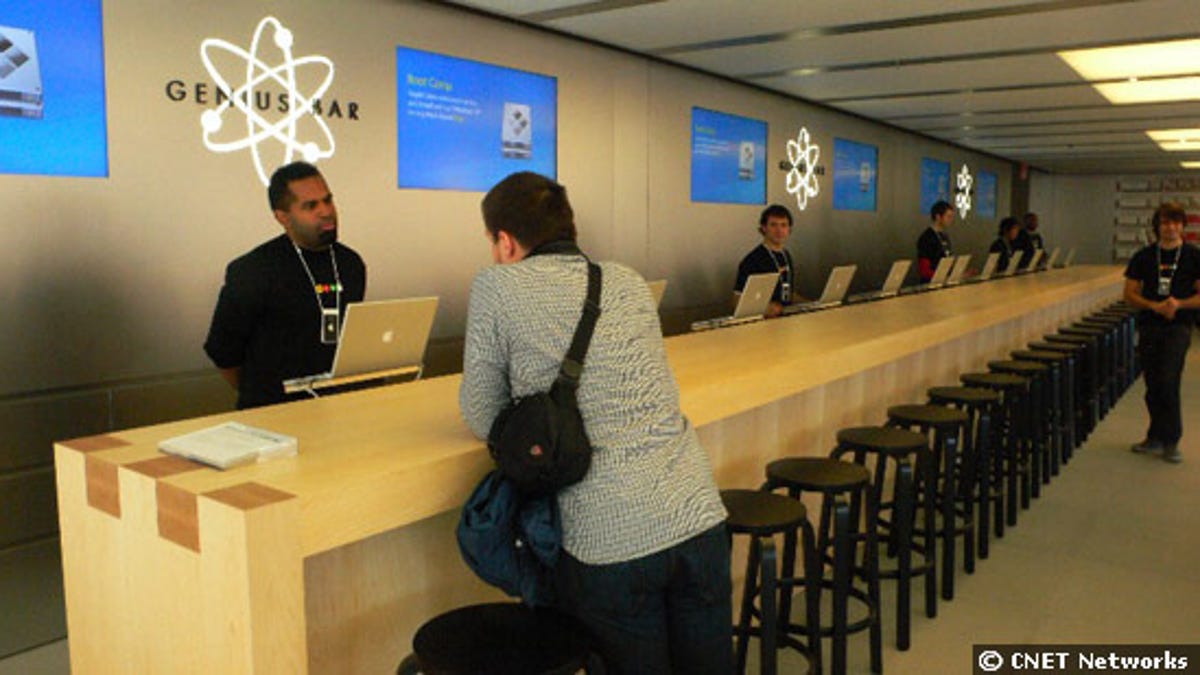Apple stores to get virtual counterparts?
The U.S. patent office publishes an application from Apple with clues that could point to a retail outlet for Macs and more in <i>Second Life</i>.

A patent filing by Apple is prompting speculation that the Mac and iPod maker could be getting ready to open up Apple stores in the virtual realm--perhaps in Second Life.
On Thursday, the U.S. Patent and Trademark Office published a patent application from Apple titled "Enhancing online shopping atmosphere," filed in September 2006. The PTO's action was first noted by the Mac news site MacNN.
Judging by the patent application, the company apparently is looking to do more than just spruce up its own Apple Online Store. Rather, it seems interested in creating a whole new experience for consumers looking to buy its products via the Web.
In dissecting the application, MacNN picked up on a number of clues that portend a commercial undertaking of the sort that have been popping up in the virtual world Second Life in recent years. And indeed, even a quick reading of the PTO document makes such an assumption quite plausible.
First this, from the Background of the Invention paragraph:
(O)ne drawback of online shopping is that the experience can feel sterile and isolating. Customers in such an environment may be less likely to have positive feelings about the online shopping experience, may be less inclined to engage in the online equivalent of window shopping (e.g., will not linger in front of a display), and may ultimately spend less money than their counterparts who shop in physical stores.And then this, in Detailed Description, after Apple has titled a hypothetical visitor to the online store "Alice":
Other visitors to the site are represented by human shaped icons such as icon 118. Both Alice and one other visitor (118) are currently viewing the main page of the Acme website. They are represented by icons in entryway 120 accordingly. Other visitors are viewing other portions of the website.
People shopping at a site like Amazon.com, Zappos, or Store.apple.com don't get to see others while they're browsing and buying. On Second Life, by contrast, the core experience is all about seeing the avatars of other participants.
And Second Life is no stranger to commercial endeavors or the incursions of high-tech companies such as IBM. It's worth noting again, however, that the Apple patent application was submitted in 2006, during the first wave of corporate interest in what virtual worlds might offer to a profit-minded business.
So do take a deep breath before concluding that this is a done deal. As Wagner James Au says on the GigaOm site--while also noting that "when a Second Life user built an unofficial Apple Store last year, it generated tremendous buzz (as the 270K views of this YouTube video suggest.)":
So does this mean Steve Jobs is going to show off his avatar in a virtual Apple store at the next big Mac show? Possibly, but even with my pronounced Second Life bias, I'm more than a touch skeptical. Companies file all kinds of patents that go unused, as a way of preemptively staking out territory.

